 Expert's opinion
Expert's opinion
The article is a subjective view on this topic written by writers specializing in medical writing.
It may reflect on a personal journey surrounding struggles with an illness or medical condition, involve product comparisons, diet considerations, or other health-related opinions.
Although the view is entirely that of the writer, it is based on academic experiences and scientific research they have conducted; it is fact-checked by a team of degreed medical experts, and validated by sources attached to the article.
The numbers in parenthesis (1,2,3) will take you to clickable links to related scientific papers.
Dermatillomania Therapy: Skin Picking Disorder Treatment 2024
All articles are produced independently. When you click our links for purchasing products, we earn an affiliate commission. Learn more about how we earn revenue by reading our advertise disclaimer.
Best Price
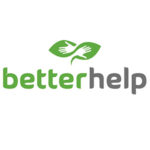
BetterHelp
- Offer therapies for various mental health issues
- Offer live video and voice sessions
20% Off First Month: healthcanal
Runner-up
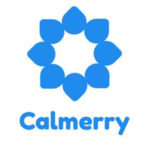
Calmerry
- Quick 60-second online assessment
- Choose a plan that suits your needs/budget
- Communicate therapist 24/7
From Just $42/week
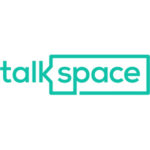
Talkspace
- Accepted by many major insurance providers
- Choose your own therapist
- Therapy for individuals, teens, and couples
$85 off your first month: HEALTHCANAL85
Everyone has their own little quirks – odd behaviors that become habits over time. For some, it’s nail-biting while, for others, it might be hair chewing or leg shaking. These habits are generally pretty harmless but compulsive behaviors like skin picking have the potential to do damage.
Dermatillomania, also known as excoriation disorder or skin-picking disorder, is a psychological condition related to Obsessive-Compulsive Disorder (OCD). This condition affects between 1.4% and 5.4%[1] of the American population and can occur at any age, though its onset typically coincides with puberty. If you’re struggling with skin picking, dermatillomania therapy may help you learn to control your impulses and overcome this compulsive behavior.
Best Online Dermatillomania Psychotherapist (April. 2024)
- Betterhelp – Editor’s Choice
- Online-Therapy.com – Best Overall
- Calmerry – Most Affordable
- Talkspace – Quick Start
- Self Therapy Journey – Best for Individual
How To Find The Best Dermatillomania Therapists?
Compulsive skin picking or dermatillomania is classified[2] under obsessive compulsive and related disorders by the American Psychiatric Association (APA) in the Diagnostic and Statistical Manual of Mental Disorders (DSM-5). This puts it in the same category as other repetitive behavioral disorders. Like many mental disorders in this category, dermatillomania can be difficult to overcome but there are treatment options.
Many people who struggle with skin-picking behavior make repeated attempts to stop on their own because they find the behavior shameful or embarrassing. Chronic skin picking can be difficult to overcome by sheer force of will, however. Professional treatment, often involving a combination of therapy and pharmaceutical drugs, is generally the best way to overcome it. Cognitive behavioral therapy (CBT) is an incredibly effective treatment[3] method for a wide variety of mental disorders including obsessive-compulsive disorder, depression, and anxiety disorders.
BetterHelp
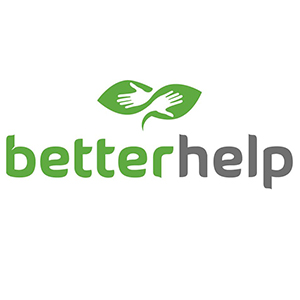
20% Off First Month: healthcanal
Betterhelp offers pretty much the same experience as in-person therapy, but without having to leave your home. Match with a counselor based on gender, faith, specialty, and more.
- Unlimited messaging
- Therapy sessions by phone or video
- Licensed Therapists
- Switch therapists easily
- Group, marriage, and family therapists are available
- Pricey
Betterhelp offers an easy way to work with an online therapist. As with some of the other full-services online therapy services, you can text with licensed, professional counselors as much as you want. Phone and video therapy sessions can be scheduled when it’s convenient for you.
Betterhelp also offers a range of mental health services. Your therapist can provide you with worksheets and handouts. Group therapy, teen counseling, and other mental health issues can also be addressed.
Online-Therapy.com

20% Off Coupon: healthcanal
Not only does online-therapy.com offer a full range of services, but it also offers guided activities. If you want to take concrete steps to improve your life, this service might be a good choice.
- Structured with worksheets and activities
- Once weekly appointments with a therapist
- Review past feedback at any time
- Security and confidentiality guaranteed
- Expensive
- Not available everywhere
If you’re ready to seek treatment, you’ll be glad to know it’s easy to find dermatillomania therapists online. Online-therapy.com is a comprehensive online therapy site that enables you to communicate with your personal therapist through messages and live chat. You’ll also have access to an entire toolbox of worksheets, activity plans, and more to help you better manage your condition and improve your mental health.
Online-therapy.com is a convenient and affordable alternative to face-to-face therapy which can be incredibly expensive. You no longer have to wait a week or more between sessions to get the support you need – you can chat with your therapist online when you need them.
This online therapy service is completely anonymous and private. Simply fill out a quick questionnaire to get started and to be matched with your personal therapist. Online-therapy.com offers a therapy program based on cognitive behavioral therapy which can help treat a wide range of mental health issues, including dermatillomania.
Calmerry

40% Off Coupon: HEALTHCANAL
Calmerry offers most of the services you’re used to, like unlimited texting and schedule video sessions. It has a stripped-down approach to go with a cheaper price.
- Licensed mental health professionals
- Individual, couples counseling, and family therapy
- Unlimited messaging by text
- Secure live video sessions
- Resources available online
- Less expensive
- Some types of therapy require you to call to start
Like a lot of similar services, Calmerry works through either the website or a smartphone app. After signing up through either portal, you are matched with a counselor who fits your needs. At that point, you’ll find a secure space for text messaging, as well as being able to schedule live sessions over video.
While you still get all the same benefits, including working with a licensed mental health professional, Calmerry still manages to charge a bit lower price. It’s a slightly less expensive alternative to more well-known apps like Betterhelp or Talkspace.
Talkspace
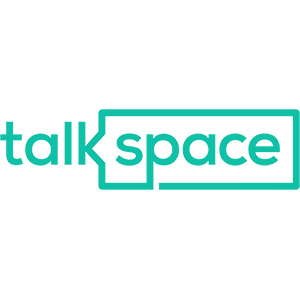
$85 off your first month: HEALTHCANAL85
There are a few services that seem to be setting the standard for the rest, in terms of options and availability. Talkspace is one of those trend-setting online therapy platforms.
- Unlimited messaging services
- Individual counseling, teen counseling, and family therapists are available
- Offers psychiatrists to prescribe medication
- Video, text, and phone sessions
- May work with your health insurance
- Costly
While online therapy is booming, there are a few that are setting the standard for teletherapy going forward. Talkspace is one of those services, offering just about the full range of options.
Starting off, you’ll be assigned a therapist that meets your needs, but you can change at any time. You can reach them at any time by text and schedule video or phone appointments.
You do pay a bit more, but Talkspace is a rare therapy service that may work with your insurance provider. Note that there are a couple of different subscription levels with Talkspace. Not all of the features are available at every subscription level.
Self-Therapy Journey
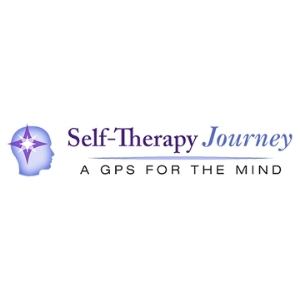
Self-Therapy Journey is well named, as it focuses on a self-help style of therapy. It provides guidance for identifying and addressing issues but doesn’t include counseling.
- Self-guided therapy exercises
- Designed by a therapist
- Designed to help with daily living
- Lower cost
- Doesn’t include therapy sessions
- No counselor at all
- Some aspects cost more
The meeting of therapy and technology has given rise to a range of different approaches. Most teletherapy offerings are aimed at bringing the traditional therapy experience online. Self Therapy Journey takes a different approach. It provides some online, interactive tools that can help you address your problems on your own.
Like many self-help programs, Self Therapy Journey is intended to help with everyday mental health issues. People in need of more support might want to look elsewhere.
What Is Dermatillomania?
Also known as excoriation disorder, dermatillomania is a chronic skin picking disorder. Affected individuals find themselves repetitively picking at their skin, often leading to soft tissue damage. This condition can affect individuals at any age, though it commonly manifests in childhood or early adolescence between the ages of 13 and 15[4].
Here are the DSM-5 criteria[5] for the diagnosis of dermatillomania:
- Recurrent picking at the skin resulting in skin lesions
- Repeated attempts to decrease or stop skin picking
- Clinically significant distress or impairment due to skin picking
- Skin picking is not attributable to physiological effects of substances or underlying medical conditions
- Skin picking is not explained by symptoms of another mental disorder
Dermatillomania can range in severity from causing minor skin irregularities to severe tissue damage. Individuals with this condition often experience shame, anxiety, or depression related to their skin picking behaviors which can lead to a reluctance to seek treatment.
Symptoms & Causes Of Skin Picking Disorder
The primary symptom of dermatillomania is, of course, repetitive skin picking. In many cases, this behavior leads to skin lesions which may range in severity from minor irregularities to severe tissue damage. In addition to physical symptoms, this chronic condition often leads to psychological distress and repeated attempts to stop or reduce skin picking.
As is true for many mental disorders, the exact cause for dermatillomania is unknown. That being said, there may be a genetic component given that many people with this skin condition have an inherited predisposition to body-focused repetitive behaviors (BFRBs[6]). It is fairly common for individuals with skin picking disorder to exhibit other BFRBs like hair pulling and cheek biting – they also exhibit a higher-than-average risk for anxiety and other mood disorders in their first-degree relatives.
On top of genetics, people who exhibit skin picking behavior may also have concurrent medical complications or dermatological conditions like acne. People with this condition can also be perfectionists, prone to overgrooming.
Complications Of Dermatillomania
Compulsive skin picking can affect the individual’s life in a number of significant ways. Depending on the severity of the skin picking, there is a risk for infections. Medical complications of skin picking may include scabbing, open wounds, scarring, or disfigurement. Individuals may try to cover or camouflage their damaged skin and the condition can affect their relationships with family and friends as well.
According to the TLC foundation, repetitive picking can also lead to psychological complications[7] related to shame and embarrassment. Many people with this disorder exhibit clinically significant distress, avoidance of certain activities and social situations, and even medical treatment. Negative emotions associated with the condition may lead to the development of psychiatric disorders such as mood or anxiety disorders.
Dermatillomania Cures and Treatments
Treatment for skin picking disorder can be divided into two categories: pharmacotherapy and nonpharmacological treatment. Generally speaking, the most effective course of treatment is a combination of these two options.
Non Pharmacological Treatment
Two common nonpharmacological treatments for excoriation disorder are cognitive behavioral therapy (CBT) and habit reversal therapy (HRT). Cognitive behavioral therapy is typically a multi-pronged treatment involving psychoeducation, cognitive restructuring, and relapse prevention. It may also incorporate elements of habit reversal training.
Cognitive-behavioral therapy for a person with excoriation disorder tends to be most helpful when they are presented in a self-help format. In one study[8], 151 patients with excoriation disorder experienced a significant reduction in symptom severity after completing a 3-month Internet-based self-help treatment program.
In a second randomized controlled study[9], habit reversal training was compared with decoupling. Decoupling is a treatment in which a person is taught to “unlearn” skin picking by replacing it with a harmless behavior that mimics the core movement. For example, if skin picking typically occurs on the face, the patient might redirect the impulsive movement to a nearby area where skin picking doesn’t usually occur, such as the ear.
Another non pharmacological treatment option for excoriation disorder is acceptance and commitment therapy (ACT). This mental health treatment involves acceptance and mindfulness techniques designed to help the individual deal with unhelpful thoughts and negative emotions. In a limited study[10] of 5 patients, a combination of ACT and HRT greatly reduced hair pulling and skin picking behaviors for all participants.
Pharmacotherapy For Skin Picking
While no medications have been approved as first-line treatments for excoriation disorder, there are a number of limited studies showing the potential benefits of certain drugs for this chronic condition. Selective serotonin reuptake inhibitors (SSRIs) and nutraceuticals have been studied, along with drugs like lamotrigine and opioid antagonists.
Selective serotonin reuptake inhibitors have demonstrated a clinically significant amount of improvement in skin picking. One drug trial[11] using fluoxetine improved symptoms more than placebo at an average dosage of 55 mg/day. Another 6-week study[12], fluoxetine supports these results. Individuals who were on the placebo continued to exhibit skin picking. Citilopram is another drug with some scientific evidence behind it for the treatment of excoriation disorder. In fact, it was the drug used in the largest double-blind study[13] of SSRIs for skin picking.
Lamotrigine, an anti-epileptic agent, has some scientific support, though the results are inconsistent. The two main trials involving lamotrigine for skin picking used a flexible dosing schedule over the course of 12 weeks of treatment. The first[14] yielded a 67% response rate but the second[15] only yielded a 43.8% response rate, lower than the placebo group.
Glutamatergic agents like N-acetyl cysteine (NAC) are of growing interest in the treatment of obsessive-compulsive and related disorders. N-acetyl cysteine, for example, helps modulate the glutamatergic and neuroinflammatory systems in the body which may help reduce skin picking symptoms. In a recent study[16], NAC significantly reduced symptoms in nearly half of participants compared to just 19% in the placebo group.
Finally, opioid antagonists like naltrexone have shown some benefit in dermatological conditions. It is important to note, however, that most studies have involved animals – the efficacy of this treatment in humans is only supported by case reports[17].
Alternative Therapies
While psychotherapy and pharmacological therapies are the most common treatments for skin picking, there are a few alternative therapies[18] which may help as well. Yoga, hypnosis, and meditation can help and some people find aerobic exercise to be distracting as well. These alternative therapies may help improve mood and relieve anxiety, two factors which can make skin picking worse.
Tips For Reducing Skin Picking Behavior
Getting the symptoms of excoriation disorder under control can be a slow process. For most people, it requires a combination of cognitive behavioral therapy and prescription medications to learn how to control the impulse. While undergoing treatment, there are a few things you can try to help mitigate skin damage to prevent scars.
Here are some tips for reducing skin picking:
- Try to keep your hands busy – squeezing a stress ball or using a fidget spinner can help.
- Cover your hands and fingers – wearing gloves can help prevent picking.
- Substitute picking for a beneficial behavior like applying moisturizer to the skin.
- Keep your skin clean to reduce the risk of infections.
- Don’t let your nails grow long – keep them trimmed short.
Though excoriation disorder can be difficult to treat, there’s no reason you can’t succeed in reducing your symptoms and regaining healthy skin. Talk to your doctor or dermatologist about treatment options and consider putting some of the tips above to work in the meantime.
Frequently Asked Questions
Also known as excoriation disorder, dermatillomania is a skin picking condition with a compulsive element. A diagnosis of dermatillomania must be confirmed with specific clinical signs including recurrent skin picking, numerous attempts to stop, and significant distress.
The underlying cause of skin picking is unknown, but researchers believe there is a genetic component. You may have a higher risk for this disorder if you have a first-degree relative with an obsessive-compulsive or related disorder (OCRD) or a mood or anxiety disorder. Other factors that may play a role include age, personality, and temperament.
It depends on the severity. Mild cases of excoriation disorder may leave temporary signs of damage that heal well but severe cases can result in serious tissue damage and permanent scars.
Treatment for skin picking typically involves a combination of cognitive behavioral therapy and pharmaceutical drugs. SSRIs have shown promising results and therapies like habit reversal training and awareness training can help.
Some of the most common complications of excoriation disorder are infection at the site of picking as well as serious skin damage and even sepsis. Some people develop epidermal abscesses and damage so severe it requires skin grafting. It can even be a medical emergency in very severe cases
+ 18 sources
Health Canal avoids using tertiary references. We have strict sourcing guidelines and rely on peer-reviewed studies, academic researches from medical associations and institutions. To ensure the accuracy of articles in Health Canal, you can read more about the editorial process here
- Lochner, C., Roos, A. and Stein, D. (2017). Excoriation (skin-picking) disorder: a systematic review of treatment options. Neuropsychiatric Disease and Treatment, [online] Volume 13, pp.1867–1872. Available at: https://www.ncbi.nlm.nih.gov/pmc/articles/PMC5522672/.
- Substance Abuse and Mental Health Services Administration (2016). Table 3.28, Excoriation (Skin Picking) Disorder. [online] Nih.gov. Available at: https://www.ncbi.nlm.nih.gov/books/NBK519704/table/ch3.t28/.
- Nih.gov. (2016). Cognitive behavioral therapy. [online] Available at: https://www.ncbi.nlm.nih.gov/books/NBK279297/.
- Lochner, C., Roos, A. and Stein, D. (2017). Excoriation (skin-picking) disorder: a systematic review of treatment options. Neuropsychiatric Disease and Treatment, [online] Volume 13, pp.1867–1872. Available at: https://www.ncbi.nlm.nih.gov/pmc/articles/PMC5522672/.
- Malayala, S.V., Rehman, H. and Vasireddy, D. (2021). Dermatillomania: A Case Report and Literature Review. Cureus. [online] Available at: https://www.ncbi.nlm.nih.gov/pmc/articles/PMC7910222/.
- Mental Health America. (2021). Excoriation Disorder (Skin Picking or Dermatillomania). [online] Available at: https://mhanational.org/conditions/excoriation-disorder-skin-picking-or-dermatillomania#:~:text=Excoriation%20disorder%20(also%20referred%20to,significant%20disruption%20in%20one%27s%20life.
- Administrator (2016). What is Excoriation (Skin Picking) Disorder? [online] The TLC Foundation for BFRBs. Available at: https://www.bfrb.org/learn-about-bfrbs/skin-picking-disorder.
- Flessner CA;Mouton-Odum S;Stocker AJ;Keuthen NJ (2021). StopPicking.com: Internet-based treatment for self-injurious skin picking. Dermatology online journal, [online] 13(4). Available at: https://pubmed.ncbi.nlm.nih.gov/18319000/.
- Moritz, S., Fricke, S., Treszl, A. and Wittekind, C.E. (2012). Do it yourself! Evaluation of self-help habit reversal training versus decoupling in pathological skin picking: A pilot study. Journal of Obsessive-Compulsive and Related Disorders, [online] 1(1), pp.41–47. Available at: https://www.sciencedirect.com/science/article/abs/pii/S2211364911000042.
- Flessner, C.A., Busch, A.M., Heideman, P.W. and Woods, D.W. (2008). Acceptance-Enhanced Behavior Therapy (AEBT) for Trichotillomania and Chronic Skin Picking. Behavior Modification, [online] 32(5), pp.579–594. Available at: https://pubmed.ncbi.nlm.nih.gov/18334614/.
- Simeon, D., Stein, D.J., Gross, S., Islam, N., Schmeidler, J. and Hollander, E. (1997). A Double-Blind Trial of Fluoxetine in Pathologic Skin Picking. The Journal of Clinical Psychiatry, [online] 58(8), pp.341–347. Available at: https://pubmed.ncbi.nlm.nih.gov/9515971/.
- Bloch, M.R., Elliott, M., Thompson, H. and Koran, L.M. (2001). Fluoxetine in Pathologic Skin-Picking: Open-Label and Double-Blind Results. Psychosomatics, [online] 42(4), pp.314–319. Available at: https://pubmed.ncbi.nlm.nih.gov/11496020/.
- M Arbabi, V Farnia, K Balighi, M Mohammadi, A Nejati-Safa, k Yazdchi, B Golestan and F Darvish (2020). EFFICACY OF CITALOPRAM IN TREATMENT OF PATHOLOGICAL SKIN PICKING, A RANDOMIZED DOUBLE BLIND PLACEBO CONTROLLED TRIAL. Acta Medica Iranica, [online] pp.367–372. Available at: https://acta.tums.ac.ir/index.php/acta/article/view/3500.
- Grant, J.E., Odlaug, B.L. and Kim, S.W. (2007). Lamotrigine Treatment of Pathologic Skin Picking. The Journal of Clinical Psychiatry, [online] 68(09), pp.1384–1391. Available at: https://pubmed.ncbi.nlm.nih.gov/17915977/.
- Grant, J.E., Odlaug, B.L., Chamberlain, S.R. and Kim, S.W. (2010). A Double-Blind, Placebo-Controlled Trial of Lamotrigine for Pathological Skin Picking. Journal of Clinical Psychopharmacology, [online] 30(4), pp.396–403. Available at: https://www.ncbi.nlm.nih.gov/pmc/articles/PMC3172612/.
- Grant, J.E., Chamberlain, S.R., Redden, S.A., Leppink, E.W., Odlaug, B.L. and Kim, S.W. (2016). N-Acetylcysteine in the Treatment of Excoriation Disorder. JAMA Psychiatry, [online] 73(5), p.490. Available at: https://pubmed.ncbi.nlm.nih.gov/27007062/.
- Piquet-Pessôa, M. and Fontenelle, L.F. (2016). Opioid antagonists in broadly defined behavioral addictions: a narrative review. Expert Opinion on Pharmacotherapy, [online] 17(6), pp.835–844. Available at: https://pubmed.ncbi.nlm.nih.gov/26798982/.
- Torales J;Barrios I;Villalba J (2017). Alternative Therapies for Excoriation (Skin Picking) Disorder: A Brief Update. Advances in mind-body medicine, [online] 31(1). Available at: https://pubmed.ncbi.nlm.nih.gov/28183072/.



